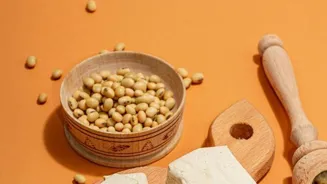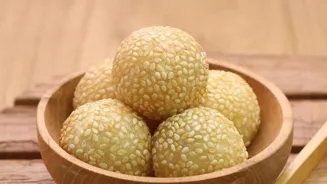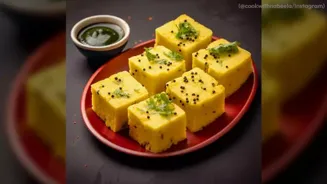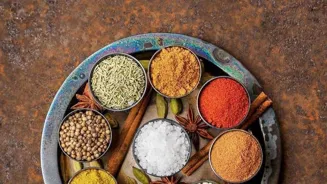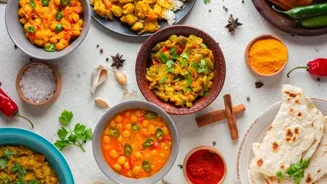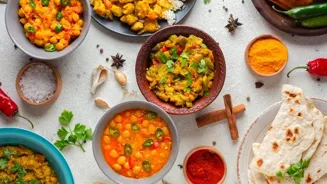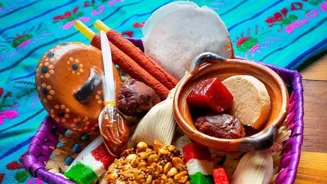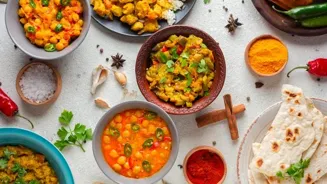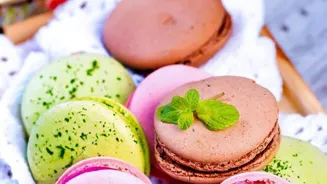Delve into the diverse world of Indian cheese beyond paneer. Discover the unique flavors of chhena, kalari, Bandel, and khoa. Explore traditional methods and culinary possibilities. Uncover the rich heritage
of Indian cheese-making. Read more to expand your culinary horizons!
For many Indians, the word "cheese" conjures up one image: paneer. This fresh, unaged cheese is a staple ingredient in countless vegetarian dishes, from creamy matar paneer to spicy paneer tikka. But the world of Indian cheese extends far beyond this familiar favourite.
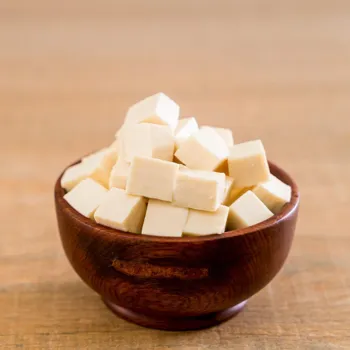
While paneer undoubtedly reigns supreme in popularity, other indigenous varieties offer unique flavours and textures that deserve recognition.
Exploring these lesser-known cheeses opens up a whole new realm of culinary possibilities, allowing home cooks and professional chefs alike to experiment with authentic Indian flavours.
From the slightly salty chhena used in sweets to the smoked bandel originating from West Bengal, there's a whole palate of experiences waiting to be discovered beyond the ever-versatile paneer. Don't be afraid to venture out and taste the amazing variety our nation provides.
Paneer is a firm non-melting cheese made by curdling milk with lemon juice or vinegar
Paneer, often called the "Indian cottage cheese," is made by curdling milk with a food acid like lemon juice or vinegar, then pressing the curds to remove excess water. The result is a firm, non-melting cheese that holds its shape well when cooked. The curdling process is simple.
You just bring the milk to a boil. Add lemon juice or vinegar to separate curds from whey. Drain the whey using a cloth. Then press to form a paneer block.
Paneer: versatile cheese for grilling and cooking in sauces
This makes it ideal for grilling, frying, or simmering in sauces. Its mild, milky flavour makes it a versatile ingredient that readily absorbs the flavours of the spices and sauces it's cooked with. This kind of cheese is high in protein and calcium.
This is why paneer dishes are popular and enjoyed at most homes.
Versatile paneer enhances North Indian dishes
You can make so many dishes with paneer, especially in North India. You can add paneer to curries, tikkas and even rice dishes.
Chhena vs. Paneer: Moisture content key for Indian sweets
Chhena is quite similar to paneer, but there are some differences. The main difference is the moisture content. Chhena retains more moisture than paneer, giving it a softer, crumblier texture. Like paneer, chhena is made by curdling milk, but the curds are not pressed as much.
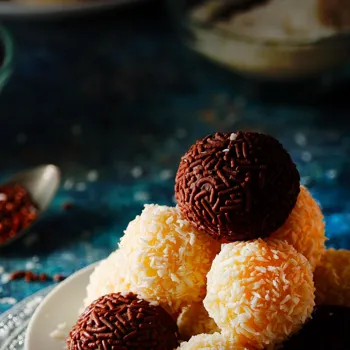
In place of high pressed process, you just need to hand it dry. This moisture difference is crucial. It is makes chhena ideal for making Indian sweets like rasgulla, rasmalai, and sandesh. To make these sweets, the chhena is kneaded into a smooth dough, then shaped and cooked in sugar syrup.
Without the moisture, it won't come out the way it should be. The result is a delicate, melt-in-your-mouth treat that is loved by people of all ages. While paneer is the star of savory dishes, chhena shines in desserts, demonstrating the versatility of milk-based products in Indian cuisine.
Kalari cheese: traditional, unique texture, tangy flavor, Jammu favorite, cooked on doona leaves
Kalari cheese is a traditional cheese from the Jammu region, particularly popular in the state of Jammu and Kashmir. Made from cow or goat's milk, it has a unique, stretchy texture and a slightly tangy flavour. The cheese-making process is quite interesting.
Milk is curdled and then wrapped in doona leaves, a specific type of leaf. This gives the cheese a distinct aroma and flavour. Kalari is traditionally cooked on its own pan. It will crisps on the outside while becoming gooey and molten inside. It is often eaten as a snack or street food.
The cooked kalari is often seasoned with salt and chilli powder. Its unique taste and texture make it a regional favorite. It highlights the diversity of Indian cheese-making traditions. Finding authentic kalari outside of Jammu and Kashmir can be difficult.
But if you ever get the chance to try it, don't miss it! It's a true taste of the region's culinary heritage.
Bandel cheese: a smoky, unique cheese from West Bengal gaining recognition
Bandel cheese is a smoked cheese which originated in the former Portuguese colony of Bandel in West Bengal. It was made by the local Mog community. It has a unique history and flavour profile. The cheese is traditionally made from cow's milk and is smoked over a wood fire.
This gives it a distinctive smoky flavour and aroma. It is typically sold in small, flattened discs. Bandel cheese has a salty and slightly tangy taste. It is often used in salads, sandwiches, or as a topping for various dishes. It has its unique flavour and cultural significance.
However, it is not as widely available as paneer or chhena. Fortunately, it is gradually gaining recognition. Chefs and food enthusiasts are experimenting with it, hoping to revive this heritage cheese. Its smoky flavour adds a wonderful dimension to any dish.
It offers a taste of Bengal's unique culinary history in every bite.
Khoa: not cheese, but dairy essential in Indian sweets
Khoa, also known as khoya or mawa, is not technically a cheese. This is a dairy product made by evaporating all the moisture content from milk. It comes from milk, but it will have a consistency of cheese. It is a thickened milk solid. Khoa is a fundamental ingredient used in many Indian sweets.
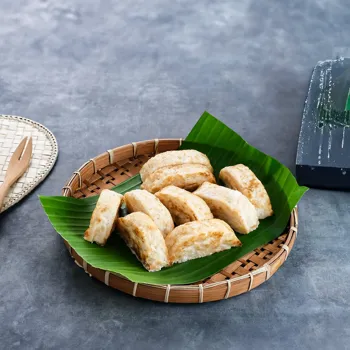
Unlike paneer or chhena, khoa isn't made by curdling milk but by reducing it slowly over heat. This process caramelizes the milk sugars. It turns the milk into a dense, slightly sweet solid. There are different types of khoa, varying in texture and moisture content.
They include: batti khoa (hard), chickna khoa (soft), and danedar khoa (granular). All are suited for different preparations. It is used in making barfi, peda, gulab jamun, and many other traditional sweets. Kulfi and halwa can also contain khoa. It is adds richness and a distinct milky flavour.
So while it might not be a cheese in the strictest sense. Khoa plays a vital role in Indian cuisine. It's something that you cannot miss.
AI Generated Content. Glance/InMobi shall have no liability for the content